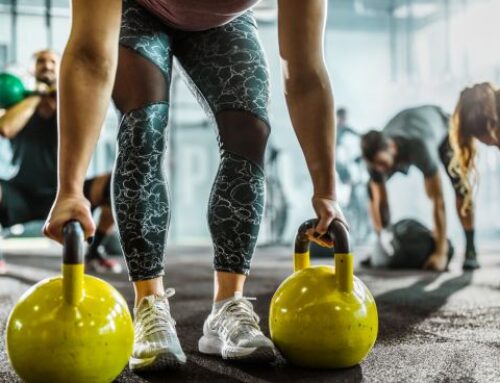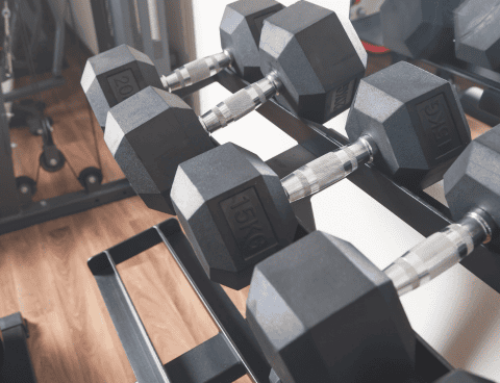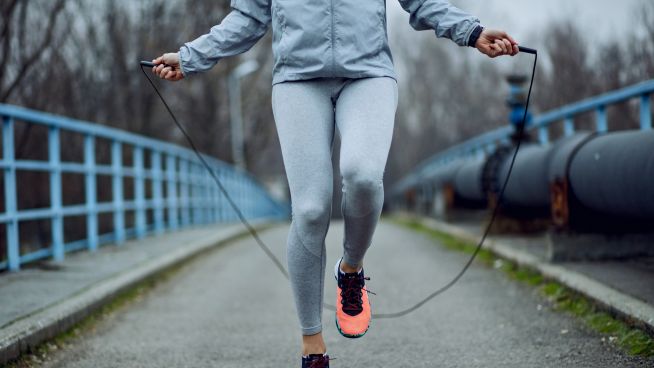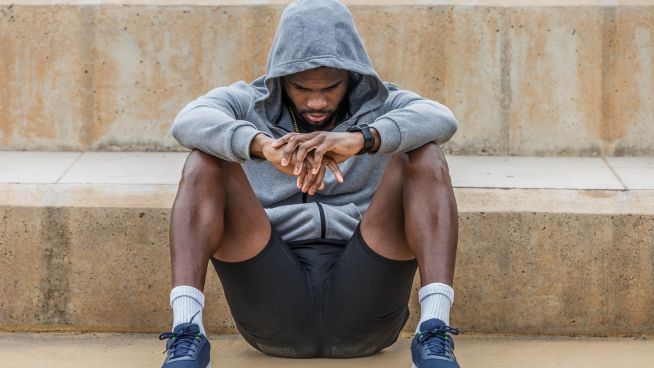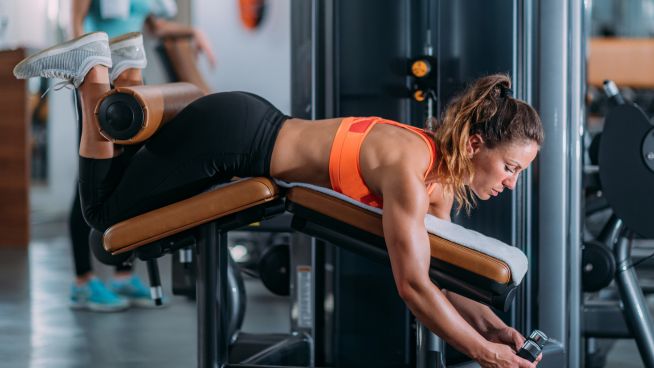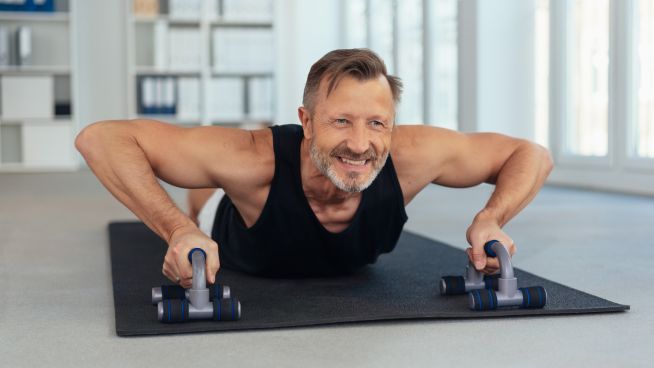Why Your Grip Strength Is One of the Best Predictors of Your Life Span
A firm handshake is often considered polite, but it can also carry greater implications.
Specifically, research has established a strong link between one’s grip strength and their expected longevity. Those who retain higher levels of grip strength throughout life have been found to have lower risk of several common, life-threatening diseases.
For example, a 2018 study published in The BMJ examined how the grip strength of over 500,000 adults between the ages of 40 and 69 correlated to their rates of healthy outcomes such as heart disease, respiratory disease and/or cancer.
Researchers adjusted for diet, sedentary time and socioeconomic status.
They found that a grip-strength measurement of less than 57 pounds for men and less than 35 pounds for women was associated with “higher overall risk of death and higher risk for specific illnesses.”
From Reuters:
Each 5-kg (11-lb) increment of grip strength below these thresholds was tied to a 20 percent increase for women and a 16 percent increase for men in the risk of death from all causes…For death from heart disease, the risk increased 19 percent for women and 22 percent for men. For death from respiratory disease, the increase was 31 percent for women and 24 percent for men, and for deaths from all cancers, the increase was 17 percent for women and 10 percent for men.
The associations were often surprisingly strong. For example, grip strength proved to be a better predictor of cardiovascular disease than traditional metrics like blood pressure and physical activity.
While it’s long been logical to assume that weak grip strength in an elderly person is one sign of declining health, this study found the same rings true even for adults in their 40s.
A 2015 study published in The Lancet, which examined the link between grip strength and risk of death, heart attack and/or stroke for nearly 140,000 participants between the ages of 35 and 70, found similar results.
Why Grip Strength Matters
The mechanisms behind these correlations aren’t completely understood. Nevertheless, they are not new.
Countless other research studies have shown similar findings. Grip strength, in a sense, can be viewed as a biomarker for longevity. Biological age is vastly different than chronological age. Those who take care of themselves and monitor their health often display physical attributes much better than what’s considered “normal” for their chronological age.
You cannot stop aging, but you can certainly slow it down. For elderly populations. grip strength can be an important component of functional tasks like opening jars, carrying groceries or holding onto railings.
For younger folks, grip strength may simply be a sign of an overall healthier person who maintains a greater amount of muscle mass.
How to Build Grip Strength

The simple act of regular resistance training is a tremendous way to build grip strength, but it also has a plethora of other benefits.
Several studies have proven that regular resistance training is one of the best possible form of exercises for older adults.
Pulling exercises such as Deadlifts, Rows and Chin-Ups/Pull-Ups will aid in grip strength training.
Two of my personal favorite methods for building both full-body fitness and improved grip strength are Farmer’s Walks for distance and Dead Hangs from a pull-up bar for time.
For the Farmer’s Walks, I recommend using dumbbells (or, if needed, kettlebells). The main points of emphasis here are maintaining a tall, strong posture with a neutral spine and a tight core. You also want to keep your shoulders down and back. Keep your eyes straight ahead as you walk and take small, quick steps.
Longer distances and/or heavier weights will do more to challenge your grip strength. Aiming to achieve a total distance of 40-100 meters with each walk may be a good place to start (it’s OK if you need to take short breaks to reach that at first). Go with lighter dumbbells until you feel comfortable with the form, then gradually get heavier as your progress. Aim for 2-4 total unbroken walks in a workout.
For the Dead Hang, you’re simply hanging from a pull-up bar and focusing on good shoulder retraction, posture and breathing. You can experiment with both an overhand and an underhand grip:
They might look easy enough, but they’ll challenge your grip strength in a hurry. Simply fight through the pain and try to hold on as long as you can. At first, this may be only 10 or 15 seconds, but keep trying to progress over time. A 1-minute unbroken hang is a good indicator of excellent grip strength. Aim for 2-3 total hangs in a workout.
These two exercises will increase grip strength endurance.
Aside from those, special implements called grip trainers can improve your grip strength but don’t offer the full-body benefit of traditional resistance training.
It’s also important to train the hand and forearm flexors (the muscles needed to open your fingers against external force). This will ensure that your grip is strong through and through.
Photo Credit: fizkes/iStock
READ MORE:
RECOMMENDED FOR YOU
MOST POPULAR
Why Your Grip Strength Is One of the Best Predictors of Your Life Span
A firm handshake is often considered polite, but it can also carry greater implications.
Specifically, research has established a strong link between one’s grip strength and their expected longevity. Those who retain higher levels of grip strength throughout life have been found to have lower risk of several common, life-threatening diseases.
For example, a 2018 study published in The BMJ examined how the grip strength of over 500,000 adults between the ages of 40 and 69 correlated to their rates of healthy outcomes such as heart disease, respiratory disease and/or cancer.
Researchers adjusted for diet, sedentary time and socioeconomic status.
They found that a grip-strength measurement of less than 57 pounds for men and less than 35 pounds for women was associated with “higher overall risk of death and higher risk for specific illnesses.”
From Reuters:
Each 5-kg (11-lb) increment of grip strength below these thresholds was tied to a 20 percent increase for women and a 16 percent increase for men in the risk of death from all causes…For death from heart disease, the risk increased 19 percent for women and 22 percent for men. For death from respiratory disease, the increase was 31 percent for women and 24 percent for men, and for deaths from all cancers, the increase was 17 percent for women and 10 percent for men.
The associations were often surprisingly strong. For example, grip strength proved to be a better predictor of cardiovascular disease than traditional metrics like blood pressure and physical activity.
While it’s long been logical to assume that weak grip strength in an elderly person is one sign of declining health, this study found the same rings true even for adults in their 40s.
A 2015 study published in The Lancet, which examined the link between grip strength and risk of death, heart attack and/or stroke for nearly 140,000 participants between the ages of 35 and 70, found similar results.
Why Grip Strength Matters
The mechanisms behind these correlations aren’t completely understood. Nevertheless, they are not new.
Countless other research studies have shown similar findings. Grip strength, in a sense, can be viewed as a biomarker for longevity. Biological age is vastly different than chronological age. Those who take care of themselves and monitor their health often display physical attributes much better than what’s considered “normal” for their chronological age.
You cannot stop aging, but you can certainly slow it down. For elderly populations. grip strength can be an important component of functional tasks like opening jars, carrying groceries or holding onto railings.
For younger folks, grip strength may simply be a sign of an overall healthier person who maintains a greater amount of muscle mass.
How to Build Grip Strength

The simple act of regular resistance training is a tremendous way to build grip strength, but it also has a plethora of other benefits.
Several studies have proven that regular resistance training is one of the best possible form of exercises for older adults.
Pulling exercises such as Deadlifts, Rows and Chin-Ups/Pull-Ups will aid in grip strength training.
Two of my personal favorite methods for building both full-body fitness and improved grip strength are Farmer’s Walks for distance and Dead Hangs from a pull-up bar for time.
For the Farmer’s Walks, I recommend using dumbbells (or, if needed, kettlebells). The main points of emphasis here are maintaining a tall, strong posture with a neutral spine and a tight core. You also want to keep your shoulders down and back. Keep your eyes straight ahead as you walk and take small, quick steps.
Longer distances and/or heavier weights will do more to challenge your grip strength. Aiming to achieve a total distance of 40-100 meters with each walk may be a good place to start (it’s OK if you need to take short breaks to reach that at first). Go with lighter dumbbells until you feel comfortable with the form, then gradually get heavier as your progress. Aim for 2-4 total unbroken walks in a workout.
For the Dead Hang, you’re simply hanging from a pull-up bar and focusing on good shoulder retraction, posture and breathing. You can experiment with both an overhand and an underhand grip:
They might look easy enough, but they’ll challenge your grip strength in a hurry. Simply fight through the pain and try to hold on as long as you can. At first, this may be only 10 or 15 seconds, but keep trying to progress over time. A 1-minute unbroken hang is a good indicator of excellent grip strength. Aim for 2-3 total hangs in a workout.
These two exercises will increase grip strength endurance.
Aside from those, special implements called grip trainers can improve your grip strength but don’t offer the full-body benefit of traditional resistance training.
It’s also important to train the hand and forearm flexors (the muscles needed to open your fingers against external force). This will ensure that your grip is strong through and through.
Photo Credit: fizkes/iStock
READ MORE:


